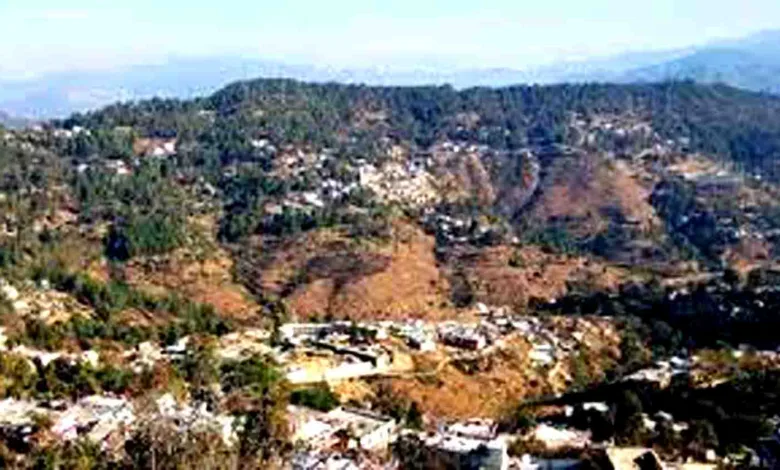The delimitation quandary in Uttarakhand

GUEST COLUMN

Poet Mahesh Chandra Punetha wrote,”Now the road has reached your village, when the entire village has gone to the city.” He has tried to express the pain of migration and lack of development, upon which political discourse is based. It was considering the historical, special geographical, social and cultural situation of this region that in 1994 the people demanded a separate State. This was because in Uttar Pradesh, plans were made keeping in mind the plains, which were not suitable for the mountains. Due to less representation, the voices of the representatives of the mountains were often unheard in Lucknow. But after the formation of Uttarakhand, representation has risen again as a challenge in a different way. Population has been considered as the basis for delimitation and distribution of Assembly/Lok Sabha seats. Due to continuous decline in population in the mountains, the Assembly/Lok Sabha seats are decreasing in these areas. Given this situation, a demographic imbalance has arisen and the question of ‘mountains versus plains’ is being raised again.
It, however, inadvertently becomes necessary to note the difficult geography of Uttarakhand in the case of delimitation. This is needed so that the representation of the mountains can increase instead of decreasing, and the public representatives in the State can raise the issues of their areas in the Assembly. When population becomes the basis of delimitation, it is obvious that the plain areas get more representation and the mountains suffer from neglect. This is like when the mountainous areas were part of Uttar Pradesh before 2000. The need for a separate provision, as in the case of the North-Eastern States, has also arisen for Uttarakhand. If the exclusive requirements of the mountain State cannot be catered to, then there is no valid reason for Uttarakhand to exist as a distinct state from Uttar Pradesh.
Keeping in view the specific geographical and social conditions, some special provisions have been kept under Article 371 of the Indian Constitution, which determine the Assembly and Lok Sabha constituencies of some Indian States. Articles 82 (2) (a), 82 and 170 of the Indian Constitution mention the composition of the Lok Sabha and State Legislative Assemblies. According to Article 81 (2), the ratio between the number of seats in the Lok Sabha of each State and the population in the State should be the same for all the States (so far as practicable). Similarly, in 81 (2-b) the same provisions are for the Legislative Assemblies of the States. Based on the understanding of Article 81 (2) (a), the population represented through each Lok Sabha seat in the country should have been the same. However, in Uttarakhand as well as Ladakh and many other Himalayan States, the population represented is very less in comparison to the Lok Sabha seats of other provinces of the country. If special circumstances have led to altered provisions for Lok Sabha seats, why is not so for Assembly seats as well?
In Section 9 and 10 of the Delimitation Act 2002, there is mention of making the delimitation geographically one-sided. In this regard, standards have been set for determining the delimitation, keeping in mind the geographical features, heterogeneity of administrative units, communication facilities and public facilities. In Uttarakhand, instead of prioritising population, attention should have been given to geographical disparities and other required prescribed factors based on regional inequalities and comparative analysis of public representation. Given the unique geographical situation of each Himalayan State, it is imperative that this approach be implemented uniformly across all of them.
Despite population being considered the basis for delimitation, in Section 82 and 170 of the Indian Constitution, the term “so far as practicable” has been used, meaning that special relaxation is possible in determining public representation in states facing adverse circumstances. Considering the geographical characteristics of Uttarakhand, 42 Assembly seats were allocated to the mountainous areas and 28 to the plains during the State’s formation in 2000. After this, when delimitation was determined by making population the standard, it was a deep blow to public aspirations and was significantly discordant from the basic concept of the State.
In line with other Himalayan States, the rural development of the State is being significantly affected due to non-determination of boundaries. In addition to the correct method adopted for delimitation, the special condition of rural areas, odd geographical conditions, communication and public facilities must also be given preference. Since delimitation in 2000, the mathematics of allotted Assemblies has completely contradicted the vision of the State. In the last 23 years, during the tenure of five Assemblies, the number of Assembly representatives has undergone a diametrically opposite shift, from 28 seats in the mountainous areas and 42 in the plains. A total of 10 Assembly seats in the mountainous region decreased due to reduction in population density and four other Assembly constituencies disappeared from existence due to changes in the boundaries of the Assembly constituencies in the mountainous region. The rural development infrastructure in the mountains appears to be in mourning as 14 constituencies were completely erased from the political discourse. Given the consequences of delimitation, resources from 14 MLA funds are now being concentrated for development of the already-developed plain areas, instead of being utilised for the upliftment of the mountains.
The point of concern is that, in addition to demographic and political shifts, the unchecked migration of people from the mountains to the plains has become a threat to the survival of the identity of the mountains. The biggest emerging problem is that the State’s frontiers are now under double pressure from Chinese expansionism. This is the direct result of decreasing population in the border areas of the mountains. China has been registering its active presence in Barahoti Glacier, Chamoli. Recently India’s all-weather neighbour Nepal has started its unilateral border claim in Uttarakhand. Nepal borders three districts of Uttarakhand- Chamoli, Pithoragarh and Uttarkashi. The three districts have faced large-scale migration in the recent past. Due to this, the security forces lack local support as before, putting the surveillance activities of the borders in constant danger and making it increasingly expensive. It is well known how during the Kargil war in 1999, it was the local shepherds who informed the Indian Army about Pakistani infiltration. Thus, the significance of the presence of the local population is well registered in upholding national security. In light of the current migration pattern, security concerns in districts that share international borders are bound to occur.
Migration has also put pressures and challenges for the cities of Uttarakhand. With people migrating from the mountains, urban areas in the State are struggling with over-population which has increased well above the mark of the carrying capacity of the State. One cannot deny that cities have become centres of education, employment, health and other facilities. Despite these developments, a comprehensive improvement is required in the overall model of development. Our lack of a definite policy for cities may exacerbate this issue in the future. Hence, it is imperative to formulate comprehensive and strategic plans for urban areas as well. Presently, cities like Dehradun, Haridwar, Rishikesh in Garhwal and Rudrapur, Kashipur and Haldwani in Kumaon have emerged as preferred destinations for migrants from the mountains. In a bid to accommodate the increasing population, these cities are becoming islands of unplanned development and haphazard urbanisation. With the cost of living rising in the cities, they also face exorbitant land and housing costs, along with numerous social nuisance. As the cities struggle, it doesn’t take an expert to observe that these cities have not been built to bear the burden of unregulated and abrupt migration. Only dedicated policies can help the cities manage the issue of over-population and migration.
Evidently, migration has posed numerous challenges for Uttarakhand. Firstly, to address the threat to national security, basic facilities like employment, education and health will have to be provided to the locals to incentivise them to stay. With a significant population in border areas, the security forces can rely on the locals to strengthen and act as the first line of information, thus strengthening the security cordon. The establishment of villages by China in the far eastern and western areas bordering India is a cause for concern. It also reflects China’s farsightedness, as the villages can be used as bases in war-like situations. Given the vast experience of wars and sensitivity of Himalayan border areas, India should prominently work towards ensuring safer borders.
Secondly, mountain agriculture should be made profitable and employment-oriented, as employment is one of the major reasons for people to migrate. Along with this, attention should also be paid to improving health facilities, easy access to education and availability of transport. After smart cities, there is currently a need to develop smart villages as well. The soul of India still resides in the villages, hence there is a need to foster these villages as islands of development. There is a need for a mountain-centric solution regarding migration in which, along with keeping the country’s borders safe, the mountains should also be kept at the centre of planning. Only then can this serious problem be resolved.
(Semwal is head of political science department in HNB Garhwal University, Uniyal is a research scholar. Views expressed are personal)






